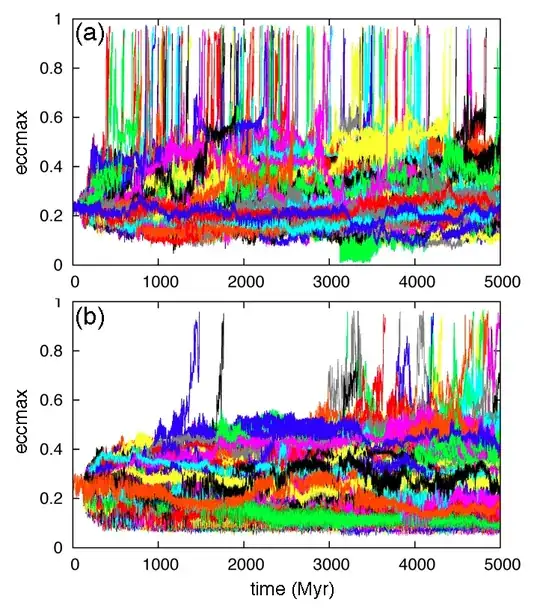This is a cool question. The short answer is: probably not.
The long answer requires us to consider a few things:
1. Are the current planets stable?
To discuss this we first need to understand something about dynamical chaos. Let's imagine a situation where you're trying to predict whether a skilled soccer player will make a goal. Furthermore, let's say you're a particular enterprising soccer fan and consequently you know the direction they will kick and the power of kick with some accuracy. In addition, you measured the goal beforehand and know what its boundaries are. If you know all these initial conditions precisely you could simply run a simulation to predict the position of the ball over time and determine - for certain - whether the player makes the goal or not.
Now let's complicate the situation: instead of knowing the initial conditions perfectly, say there is some error. If you conduct your simulation in this case you'll find there are some cases where the ball ends up in the goal, and some cases where it does not. Even if we know exactly how to do the physics, Even if our simulation is perfect, the position of the ball at any given time in the future will be uncertain simply because the initial conditions are.
The solar system as a whole exhibits something called chaos, which, at the risk of oversimplifying, is fundamentally just a version of this same effect we found with the soccer player. The difference is that in the case of chaotic systems the error in a subsequent state grows quickly (typically exponentially) in time. Hence, dynamical studies of the solar system typically involve comparing large sets of simulations statistically - while we can't be confident in any individual simulation - the overall ensemble is interpretable!

Below is a plot from a paper by Laskar, J. & Gastineau, M. unfortunately behind paywall. They integrated identical copies of the solar system for 5 billion years with the only difference being that they shifted initial position of the planet Mercury by just a few meters between simulations. The plots show the resulting maximum eccentricity of the Mercury over time (first panel is using just Newtonian mechanics, and the second panel is using General Relativity). In either case, there are many cases where the eccentricity of mercury can grow extremely large, and most of these cases result in either ejection from the solar system or collision with another planet.
This implies that the current planets - just the 4 we have - aren't super stable as is. This isn't to say that the solar system will definitely shake itself apart - but it does show that the unstable trajectories are possible given what we know about the current state of the solar system.
2. Alright, but what about adding another one?
If we wish to consider the addition of another planet, what's critical is its mass. If the new body has a small mass, it won't really destabilize the orbits of the more massive bodies, and it has a better chance of surviving. There are regions like this in the solar system - for example the "Earth-Mars Belt" (you can read the paper here: since it's public), a region between ~1.09 and ~1.17 AU where small bodies might be able to survive for billions of years.
Finally, we get to your case - what if the added body is the size of the earth? In this case, the body not only needs to survive, but it also has to do so in a system that is being destabilized by its own (earth sized!) gravitational field. Given that the solar system without such a body is barely stable, the addition of such a large body would almost destabilize the entire inner solar system - probably impacting another planet or being ejected. While the only way to find out for sure would be to run a ton of very time-consuming simulations, I'd be very skeptical that such a situation is possible.
3. What about resonances?
There are some situations where planets can be found in what are called "Mean-Motion Resonances" with each other, and this tends to permit stability even in very closely packed systems. The poster child for this type of behavior is the Trappist-1 system, which exhibits several small planets all in resonance with each other. While such a configuration cannot be realized by simply adding a planet to our solar system - it is conceivable that there could exist systems in general with planets more tightly packed than what we have.
**This answer is reproduced from a similar question on the Astronomy StackExchange
